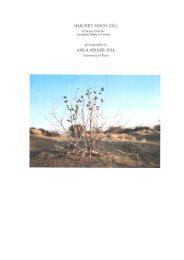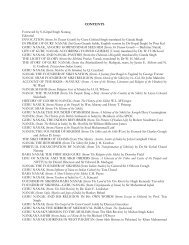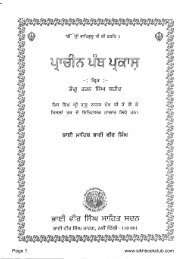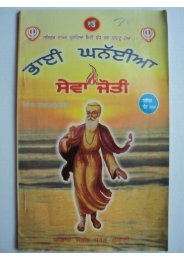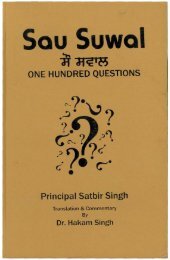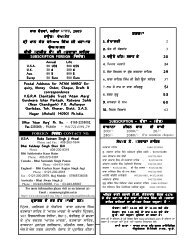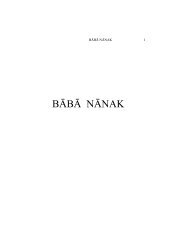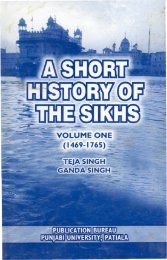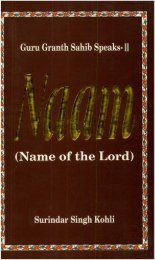You also want an ePaper? Increase the reach of your titles
YUMPU automatically turns print PDFs into web optimized ePapers that Google loves.
Perhaps nothing illustrates the character of Ranjit Singh's<br />
regime more tellingly than the fact that his decision to outlaw<br />
the killing of cows which was offensive to the non-Muslim<br />
population was accepted without any resistance. Even the ruler<br />
of Afghanistan sent him his word to the effect that the killing<br />
of cows had been discontinued in his own countty. This was<br />
done presumably to court favour with him.<br />
It was this atmosphere of tolerance and mutual respect<br />
which he was able to generate and which earned him the<br />
undying loyalty of people like Shah Mohammed and others.<br />
Nijhawan has called attention to this fact pointedly in his<br />
introduction and no more needs to be said about it.<br />
The third point which Nijhawan makes is equally<br />
meaningful. Going back to what he knows about the 19th century<br />
and the kind of atmosphere which prevailed in small towns and<br />
the counttyside during his childhood, he makes bold to say that<br />
co-existence amongst the various communities was a fact of daily<br />
life. If all this began to change under the impact of the British<br />
rule, it needs to be recognised that these changes came about<br />
because of the social and economic forces generated by the<br />
British rule. At the same time, it was a matter of high policy for<br />
the British to create divisions amongst the various communities.<br />
The introduction ofthe separate electoral system in the beginning<br />
of the 20th century and all that followed, are details which do<br />
not have to be recalled here. Those are recorded in countless<br />
books of history.<br />
What the British did was to promote a sense of separate<br />
identity in each community. In the rest of India, there were<br />
mainly two communities: Hindus and Muslims were encouraged<br />
to look upon themselves in their exclusive way. For historical,<br />
as also sociological reasons, the Christians never got involved<br />
in this competition for a separate identity. The Sikhs however<br />
got unavoidably involved. Their proportion in the total<br />
population of the Punjab was exceedingly small, closer to 5 than<br />
10 per cent at the time the British annexed the Punjab. But they<br />
were higWy energetic and dynamic people. Depressed as they<br />
(5)



